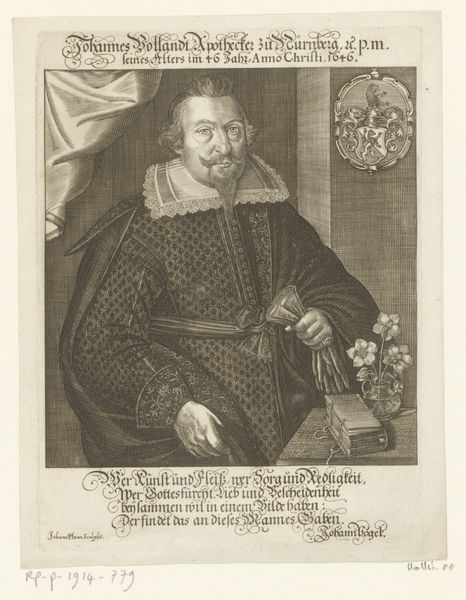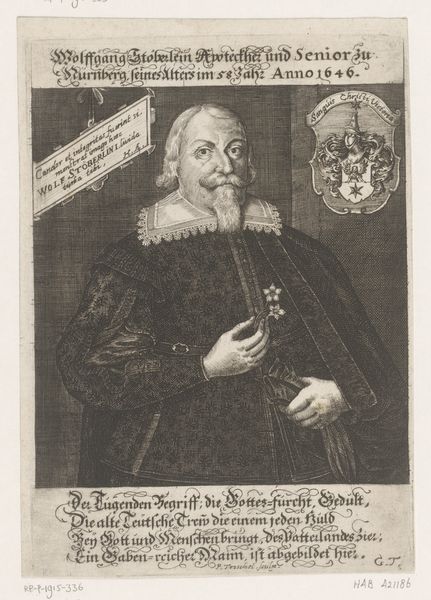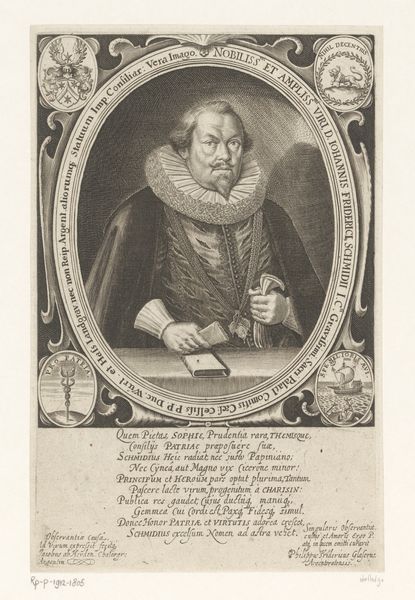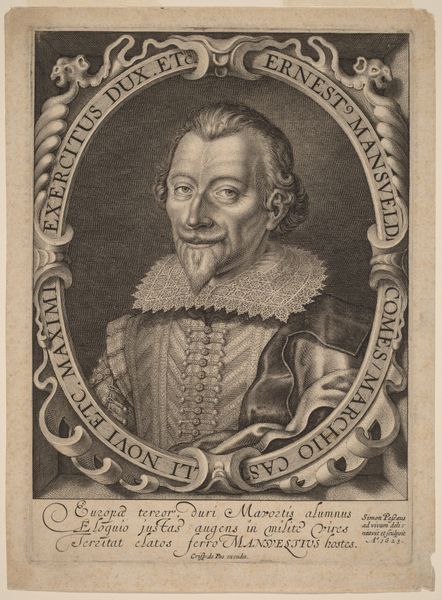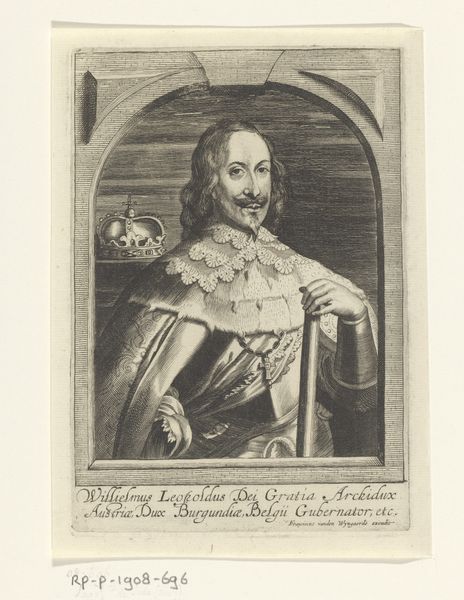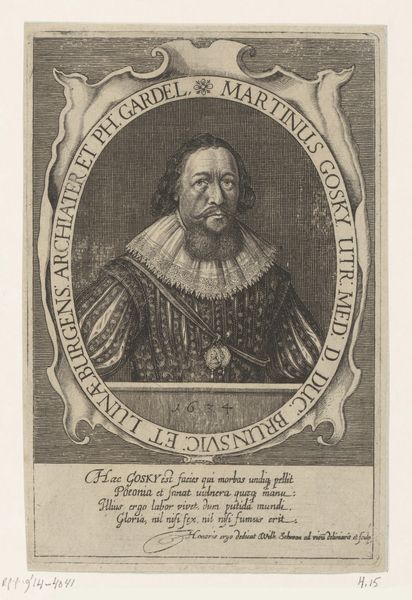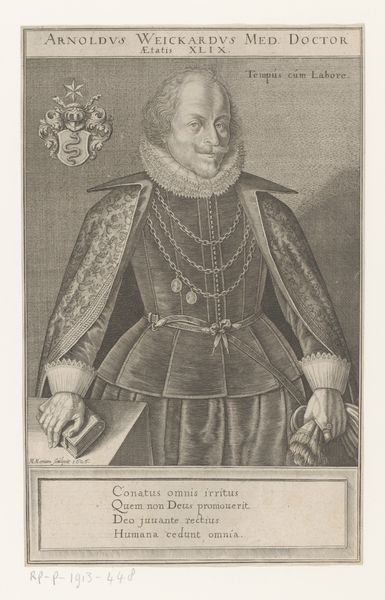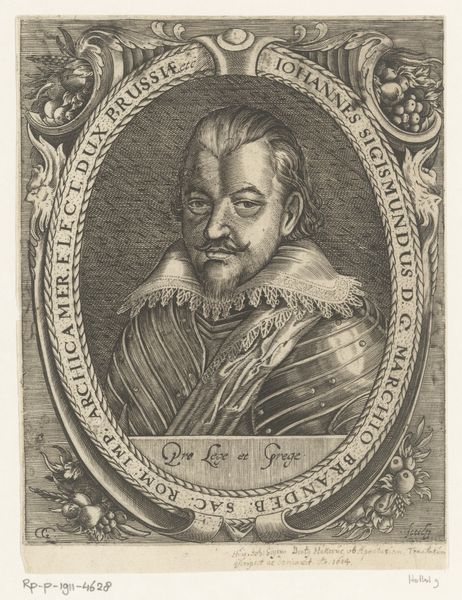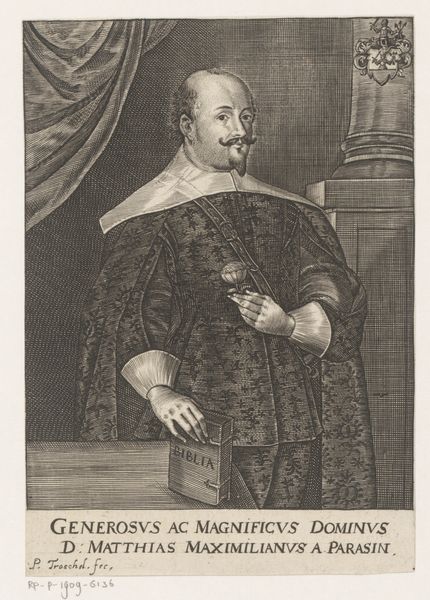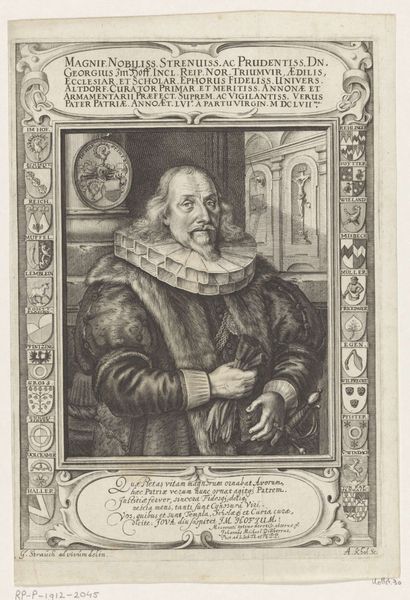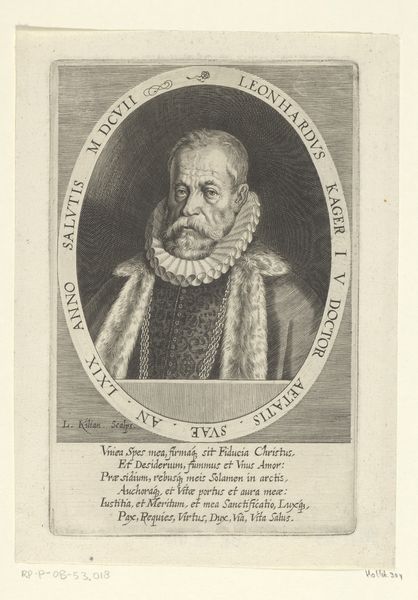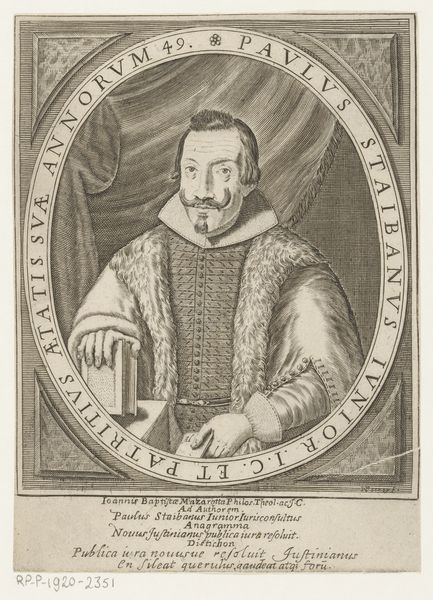
print, engraving
#
portrait
#
baroque
# print
#
old engraving style
#
figuration
#
line
#
history-painting
#
engraving
Dimensions: height 251 mm, width 151 mm
Copyright: Rijks Museum: Open Domain
Curator: This engraving is a portrait of Johann von Blansdorf by Lucas Kilian, dating back to 1630. It is currently held in the Rijksmuseum collection. Editor: Initially, I'm struck by the intricate details rendered in this monochrome print. The density of the line work and its baroque exuberance speak of wealth and power, but also suggest the meticulous labour of its making. Curator: Indeed. Observe how Kilian's mastery of line dictates the form. The interplay of light and shadow achieved through cross-hatching builds depth and texture within the flat plane, articulating every contour of von Blansdorf’s garments. The lines perform more than mere replication; they actively construct the image's reality. Editor: It also demonstrates the laborious process of engraving. Each line would have been carefully etched into the plate, building up tone and detail incrementally. Think about the societal structures inherent to printmaking: access to tools, materials, workshop conditions... it provides an implicit commentary on the wealth and resources available to Blansdorf, but also Kilian’s labor within that hierarchy. Curator: That's an interesting observation! The contrast further elevates the importance of details like the lace collar. See how its complex pattern juxtaposes against the relatively plain background, making it a focal point. It visually directs our eye and frames von Blansdorf's face, enhancing its importance within the composition. The use of pattern also subtly communicates a message about class and refinement. Editor: Speaking of visual cues, note his slightly world-weary expression juxtaposed with the finery. Is Kilian hinting at something about Blansdorf, some internal contradiction perhaps? I mean, think about the kind of labour involved in extracting the silver or the processing of the fibres to produce clothing of this quality, only for them to become mere indicators of wealth. The material conditions suggest far more than what they represent visually. Curator: I perceive a quiet dignity and composure—a representation befitting a member of the Saxon electorate. The details subtly underline his status and contribute to an overall aura of control. In considering these elements, the image speaks volumes regarding representation in art. Editor: Agreed. Even from a limited material base—a plate, a burin, ink—an artwork offers boundless possibilities of expression. It has been illuminating to think about the work and work put in.
Comments
No comments
Be the first to comment and join the conversation on the ultimate creative platform.
